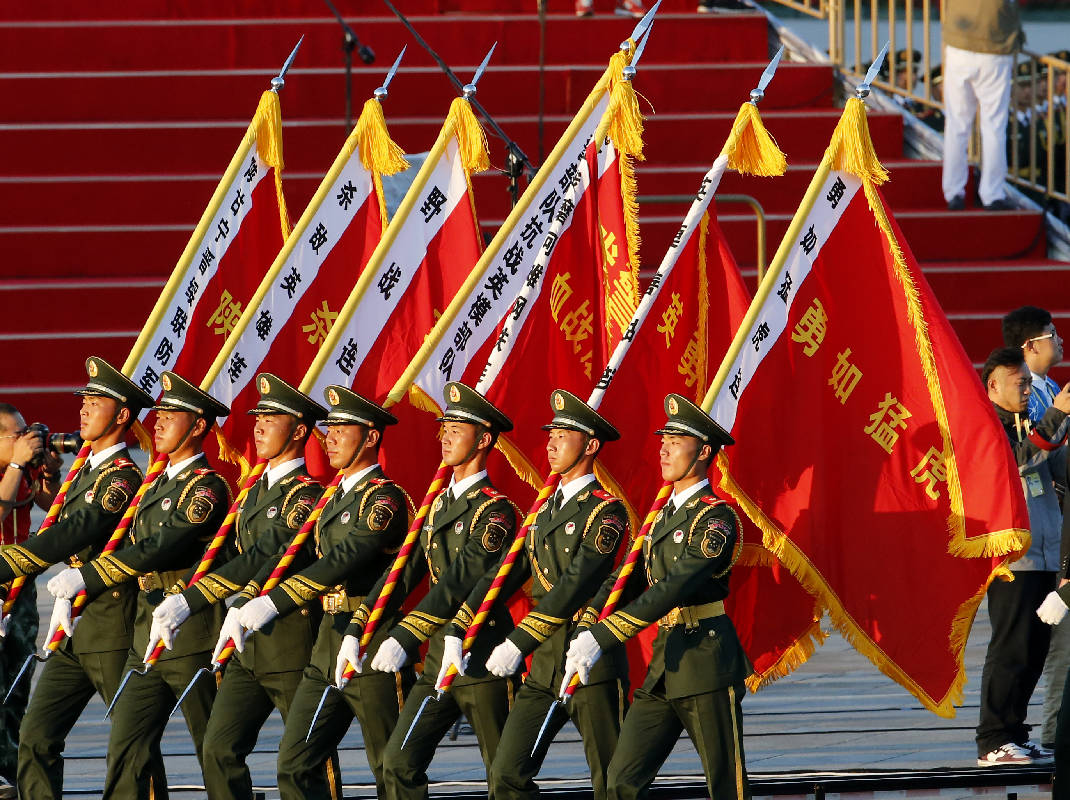The China Mission is an important book for those seeking to understand China or, more realistically, grasp the near-impossibility of understanding the complexities of China, in the past or present. Like other recent scholarship from the Council on Foreign Relations, The China Mission throws cold water on any China expert who makes definitive claims about China or the Chinese; China remains truly foreign to most Americans.
The U.S.-China Rivalry as Seen in the Cold War’s Rear-View Mirror
As the U.S.-China rivalry intensifies and tensions grow, references have increasingly been drawn between it and the other great geostrategic contest of the post-war era—the Cold War. While it might still be premature to speak of the current U.S.-Chinese rivalry and the half-century spanning Cold War in the same breath, it is not hard to see why the present situation is so evocative of its epoch-defining predecessor.
Towards a Better U.S. Space Strategy: Addressing the Strategy Mismatch
To develop a fulsome space strategy, U.S. strategists need to acknowledge that their counterparts in other countries, especially within China, do not necessarily think about deterrence and conflict in the same way. To address the problem, a viable space strategy should address Chinese long-term strategy, and in particular, U.S. space strategy should emphasize deterrence by denial, while addressing provocative actions that seek to erode U.S. strategic advantage.
Don’t Say No One Warned You: #Reviewing China’s Vision of Victory
In Military-Civil Fusion, China is Learning Lessons from the United States and Starting to Innovate
China’s national strategy of military-civil fusion is provoking some anxiety in Washington. There are concerns the United States could be challenged, or even outright disadvantaged, in technological competition relative to the more integrated approach to innovation Chinese leaders are attempting to achieve. It is important to recognize both the parallels and distinctions between American and Chinese concepts and approaches that can clarify the character of this competitive challenge.
The Thucydides Fallacy: Misdiagnosing Today’s Challenge to the International System
The rise of China is not the only distinguishing structural factor for the strategic environment in which the United States finds itself. Many scholars will discuss the role of terrorism, increased globalization, and non-state actors in the current strategic environment. These are all important, but from a classical view of the structure of the international system, what the U.S. today is facing is not just a rising power, or even a bloc of powers: it is also facing a declining power—Russia.
Xinjiang and the Belt and Road Initiative
Since Deng Xiaoping’s Reform and Opening-Up policies, China has modernised to a startling extent. However, this growth has been uneven and has caused severe inequality across the country. China’s Belt and Road Initiative (BRI) is often seen as promoting China’s influence across the world, but this is not its only purpose. This article looks at how the Belt and Road Initiative is being used as one measure to transform some of the poorest regions of China, and how despite this, China is failing to address some of the issues in its most volatile areas.
#Reviewing Red Star Over the Pacific
China seeks nothing less than to displace the United States as the preeminent power in the Pacific, if not the world. It intends to make a new order that expands the reach of its state-driven economic model. To achieve this vision, China's leaders have characterized the first two decades of the 21st century as a "period of strategic opportunity," during which Xi Jinping's “Chinese Dream” of national rejuvenation can be realized.
Not a “New Era”—Historical Memory and Continuities in U.S.-China Rivalry
The notion of a new era has become pervasive and nearly inescapable in both American and Chinese discourse, and the phrasing may, at first, appear entirely appropriate. After decades in which U.S. policy has been more oriented towards engagement, U.S. strategy today clearly and explicitly recognizes China as a competitor, seemingly undertaking a historic reorientation in ways that can be seen as reflecting a major discontinuity with the past. However, the typical turning to this phrasing of a new era to characterize recent trends in U.S.-China relations, while perhaps rhetorically appropriate, can obscure what is not new, emphasizing novelty at the expense of recognizing the history and relative consistency in certain aspects of U.S.-China relations.
#Reviewing The Rise and Fall of an Officer Corps
With Taipei’s economic and diplomatic fortunes having gone south (vis-à-vis Beijing’s) in recent decades—coupled with the rising stature of the Chinese armed forces—the story of the original party-army that ruled China proper, indubitably, has been neglected by both popular media and academe alike. In this present context, The Rise and Fall of An Officer Corps is a timely contribution to our understanding of modern China and its military history.
#Reviewing The Hundred-Year Marathon: Running on Flimsy Historical Grounds
The premise of Michael Pillsbury’s controversial book is alarming yet straightforward. Western strategic thinkers have been the victims of a massive deception campaign perpetrated by a group of Chinese hardliners who have convinced the West that China’s intentions are benign, but who are, in fact, driven by one overriding goal, to overthrow the U.S. as the world’s sole superpower. If this conjures up images of a thriller from the pen of Dan Brown, it may be the intent of the author.
Escaping the Idealism Trap
Idealism has clearly failed to grant the United States a stronger standing in the world as it failed to accurately assess the scope and consequences of interventionism, and the strategic intent of rising powers. Great power competition and the international system’s inevitable transition to a multi-polar order calls on us to embrace the challenge with clarity. This challenge should motivate an honest reassessment of U.S. foreign policy tools and processes. Adjusting to facts and reevaluating means and methods is a sign of strength and resilience of this nation.
Southeast Asia is Pivotal, and U.S. Strategy Should Aim to Keep it That Way
Chinese and Russian Defense Innovation, with American Characteristics? Military Innovation, Commercial Technologies, and Great Power Competition
While Russia and China are known for their lumbering civilian and military bureaucracies, both nations are nonetheless demonstrating that they can be nimble enough to accelerate certain technological developments, along with testing and evaluation. So far, both competitors have proven that they can take specific American elements and apply them to their own unique ecosystems. Nonetheless, using American-style institutional and procedural concepts is still a novel idea for the top-heavy ministries tasked with such breakthrough technological developments in both countries.
Emergent Technology, Military Advantage, and the Character of Future War
Absent a clear understanding of which military problems emergent technologies are required to solve, there is, perhaps, too much confidence in their ability to reshape the character of the next war by enabling decisive battlefield advantage. More troublingly, predictions about machine-dominated warfare risk obscuring the human cost implicit in the use of violence to achieve a political objective. This article examines the integration challenge that continues to limit the military potential of available technology. It will then look specifically at why militaries should be cautious about the role artificial intelligence and autonomous systems are expected to play in future warfare.
Expanding the Intellectual Capital on Challenges: China
As an exporter of professional military education, the U.S. has institutionalized western classics and ideas across the profession of arms around the globe. However, not all of the foundational classics of other civilizations have made their way to the required reading list. A common understanding of a challenge requires an understanding of our own fundamental points of reference for doctrine and strategy and an understanding of others.
The Growing Importance of Global Islamic Extremism to China
While China has traditionally been threatened by a predominately domestic separatist movement, it appears that the war in Syria and the global influence and attention of the Islamic State has given China’s domestic terror groups the opportunity to expand and network with other groups in China’s regional neighbors.
North Korea: Time for a "Normal" Strategy?
The agenda for normalizing U.S.-Pyongyang relations should be modeled after the incremental U.S.-Hanoi approach, yet also take advantage of the momentum created by the April 27 summit between President Moon Jae-in and Kim Jong Un. While the summit produced few detailed plans, both leaders agreed in principle to pursue a permanent peace treaty. This now presents a natural opportunity for the U.S. to support South Korea by setting aside previous ambitions for regime change and championing efforts to turn the 1953 armistice into a peace agreement. Progressive steps would then follow a similar multi-year process used with Vietnam. Pursuing this methodology offers a viable conduit for changing the dynamics on the peninsula and in the region, while Kim Jong Un is provided security as well as access to the resources needed to lead his desired modernization efforts.
Fewer Checks, More Balancing: How Xi Jinping’s Consolidation of Power Changes the Risk of War
Since modern China has always been led by a highly authoritarian regime, is the shift from consensus-based decision making by Party elites to a more personalist style of rule merely a distinction without a difference? Does the consolidation of power under President Xi Jinping matter, particularly to issues of war and peace?





















